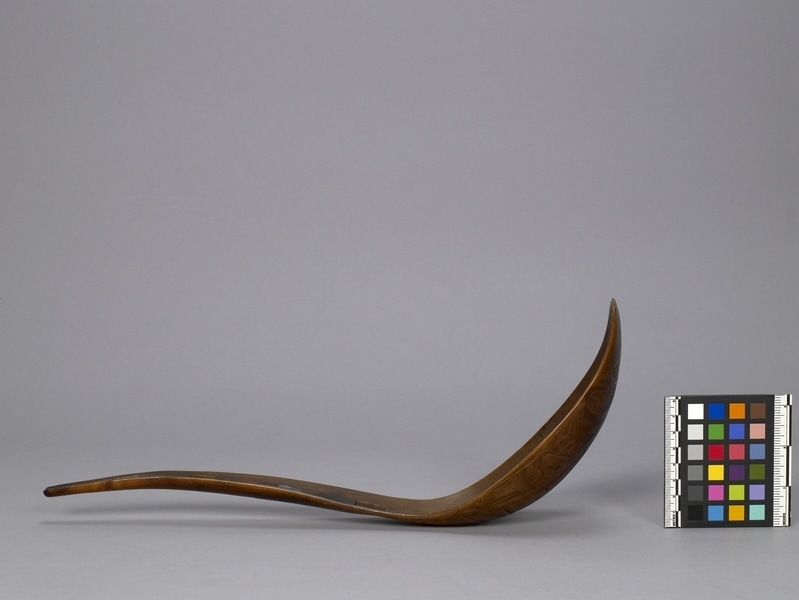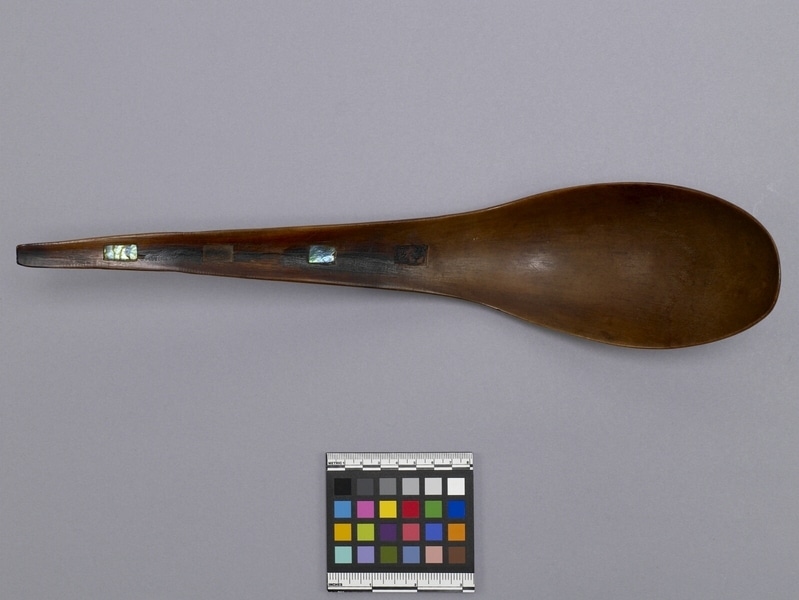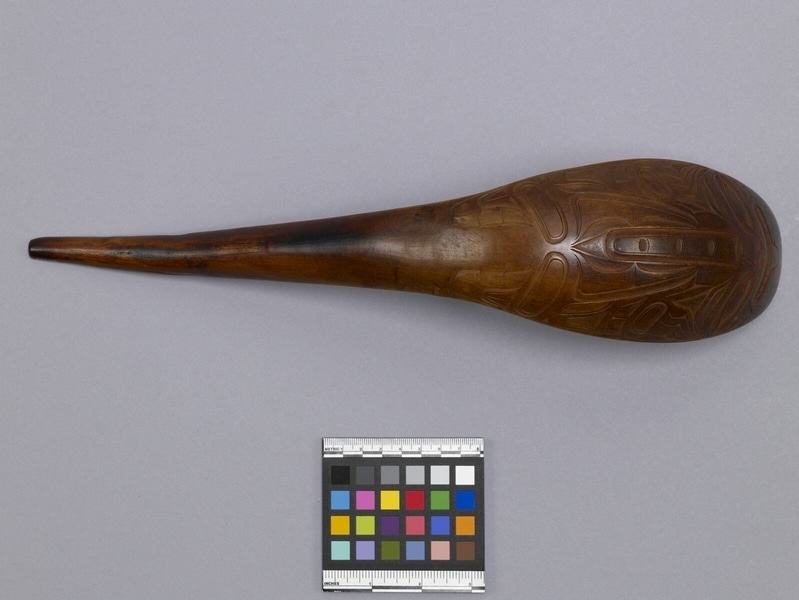Ladle Item Number: Nb1.630 from the MOA: University of British Columbia





Description
A spoon-shaped ladle with an s-type curve shape that is more pronounced in the wide bowl than the tapering handle. Bowl is oval with slightly a squared end, and gracefully tapering handle, slightly concave on the bowl side. Four evenly spaced carved rectangles on the inside surface of the handle with the top, and the second from the bottom retaining the abalone shell inlay. Exterior surface of bowl is carved with a bilaterally symmetrical stylized distributive design. Face at the spoon end has a curved mouth with even teeth rows while the tongue is sticking out at the centre, a nose with circular nostrils, large eyes in ovoids to the sides, and u-shaped ears above the eyes. Elongated u along the centre with four evenly spaced ovoids. Paw-like appendages above ears with various u-shapes filling remaining space on the sides. At the other end, there are large ovoids on each side with a split u that has internal detail above.
History Of Use
Ladles and spoons were common eating and serving implements on the Northwest Coast. Elaborately carved and inlaid horn ladles, such as this one, where used at important ceremonial feasts, and expressed their owner's wealth, status and crest associations.
Iconographic Meaning
The motifs on ladles usually expressed the same crest figures and family owned myths as are found on totem poles (Wardell).
Cultural Context
status; food serving; ceremony
Specific Techniques
Horn ladles were made by boiling or steaming mountain goat or mountain sheep horn, molding, carving and then incising.
Item History
- Made by Zacherias Nicolas (Maker) in Haida Gwaii, British Columbia, Canada before 1903
- Collected between 1893 and 1903
- Owned by Barnabas Cortland Freeman and Ida Freeman
- Owned by John E. Gibbard and I. Doreen Freeman before August 31, 1976
- Received from I. Doreen Freeman (Donor) and John E. Gibbard (Donor) on August 31, 1976
What
- Name
- Ladle
- Identification Number
- Nb1.630
- Type of Item
- ladle
- Material
- abalone shell and mountain sheep horn
- Manufacturing Technique
- boiled ?, steamed, carved, inlaid and moulded
- Overall
- height 39.0 cm, width 8.7 cm, depth 14.2 cm
Who
- Culture
- Haida
- Creator
- Zacherias Nicolas (Maker)
- Previous Owner
- Barnabas Cortland Freeman, Ida Freeman, John E. Gibbard and I. Doreen Freeman
- Received from
- I. Doreen Freeman (Donor) and John E. Gibbard (Donor)
Where
- Holding Institution
- MOA: University of British Columbia
- Made in
- Haida Gwaii, British Columbia, Canada
When
- Creation Date
- before 1903
- Collection Date
- between 1893 and 1903
- Ownership Date
- before August 31, 1976
- Acquisition Date
- on August 31, 1976
Other
- Condition
- fair
- Current Location
- Case 14
- Accession Number
- 0320/0006